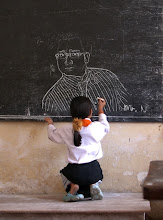I meant to post this before, but I forgot. Here are some notes I took while reading the course material and viewing some web pages.
Class Notes
Didn’t realize how popular pod casts are
Didn’t know what a true pod cast was
Doesn’t surprise me that Apple is the company that’s basically the leader of pod casts
Great that this technology makes kids more interested in school work
Podcasts vs. Essays, kids try more in podcasts
Hearing the classmate read it aloud with emphasis, feeling and comprehension makes a huge difference
She is already musing about how to combine the sound effects with the readings and commentary so that her classmates will be especially inspired to engage with the presentation that day. The informal, good-natured posdcasting competition in this class means that Jenny reads the assignments more carefully than usual, hoping to find something that will make her group’s podcast especially memorable – and enjoyable.
With digital gaurnetted to get exact same recording as the orginal
In some respects, podcasting is not even new: both streaming and downloadable audio are as old as the World Wide Web, and the RSS specification that enables podcasting has been around for several years. What’s new about posdcasting is the eas of publication, ease of subscription, and ease of use across multiple environments, typically over computer speakers, over a car stero and over headphones – all while the listener is walking or exercising or driving or traveling or otherwise moving about. (2nd article)
Can’t we leave the multimedia authoriing to the audio/video gurus at our institutions? The short answer is “yes”. Perhaps few of us will have the time, energy, or motivation to add an entirely new skill set to our working lieves. Most of us, however, can and should learn the potential uses and value of the rich media authoring – in this case, the podcast.
Longer answers: Yet even such digitally fluent students need to learn to manipulate their multimedia languages well, with conceptual and critical acumen, and we in higher education, do them a disservice if we exclude their crative digital tools from their education.
Story Telling
- Hannah Arendt captured the purpose of storytelling when she wrote: "Storytelling reveals
meaning without commtting the error of defining it."
- Storytelling played a strong role in traditional societies. Folk stories were repeated generation
after generation by gifted amateurs or professional storytellers. Stories might be used to
introduce children to correct behavior in an entertaining way. In some cultures, storytelling
for the young was considered more important than for adults.
What is storytelling?
- The National Council of Teachers of English defines storytelling as "relating a tale to one or
more listeners through voice and gestures."
- Most storytellers say it is an interactive process involving the teller who shares the tale and
members of the audience who listen and let their imaginations take over.
- "When I think of the definition of storytelling, I think of it as an event," said Shirley Raines.
"There's the story, the listener and the teller. And the teller is the person who makes it an
event but only if the listener is very engaged."
How do stories help children understand themselves and relate to others?
- When children listen to stories, they often identify with the characters' experiences and
feelings. This helps them understand their own fears, emotions, and feelings.
- Some stories introduce ethics and values and expand children's understanding of the world.
- Many times stories let children appreciate their own cultures and those of others.
What do children learn when they create their own stories?When children become storytellers they grow in many ways:
· They learn to put events in a sequence that makes sense.
· They build problem solving skills by planning how to tell the story in an engaging way.
· Their self-confidence grows as they take an active role in creating a story.
· They build strong vocabularies, learn to express their ideas clearly, and develop public
speaking skills.
· They feel important, because they have a story to tell.
Anthropologists, psychologists, and historians believe that storytelling has been with us since the beginning of our existence - in fact, they argue that storytelling is that which defines our humanity. For thousands of years, as people struggled to survive, they passed through stories what wisdom and knowledge they accumulated. In early times, storytelling was used to explain significant and often confusing events such as storms, tidal waves, lightening, and fire.
The oldest stories told are myths, legends, and folktales. Every culture has their own set of tales passing them on from generation to generation by word of mouth. The purpose of these stories were varied and complex, and included stories concerning the creation of the earth and the cosmos, the creation of humans, their trials and death, moral lessons, religion, and tales purely told for entertainment.
Today, when storytelling is mentioned, what people generally are referring to is the oral tradition.


















